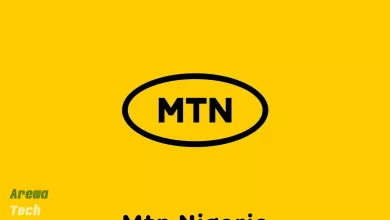Unlocking Opportunities: A Guide to Applying for USA Jobs with Free Visa Sponsorship

Unlocking Opportunities: A Guide to Applying for USA Jobs with Free Visa Sponsorship
Introduction:
The United States offers a world of professional opportunities for individuals seeking to work on American soil. Landing a job in the USA with a free visa sponsorship is an enticing prospect that can pave the way for a successful career. In this comprehensive guide, we’ll walk you through the step-by-step process of applying for USA jobs with free visa sponsorship, helping you navigate the complexities and increase your chances of success.

1. Polish Your Resume and Cover Letter: Craft a tailored resume that highlights your relevant skills, experience, and achievements. Customize your cover letter for each application, showcasing your enthusiasm for the role and how your qualifications align with the position’s requirements.
2. Identify Job Opportunities: Search reputable job boards, company websites, and job search engines for job openings in your field. Look for positions explicitly mentioning “visa sponsorship available” or “work visa sponsorship provided.”
3. Research Companies and Industries: Learn about potential employers and industries that frequently sponsor work visas. Research their reputation, values, and work culture to ensure a good fit for your career goals.
4. Understand Visa Types: Familiarize yourself with the various work visa types available in the USA, such as H-1B, J-1, and O-1 visas. Different visas have different eligibility criteria, so align your application with the appropriate visa category.
5. Tailor Your Application: Customize your application materials to align with the company’s values and job requirements. Highlight your skills, experiences, and qualifications that make you an ideal candidate for the role.
6. Address Visa Sponsorship in Your Cover Letter: In your cover letter, clearly mention your need for visa sponsorship. Emphasize your commitment to relocating to the USA for the job and your eagerness to contribute to the company’s success.
7. Network and Connect: Use professional networking platforms like LinkedIn to connect with professionals in your desired industry. Engage in relevant groups, follow companies, and reach out to individuals who might offer insights or referrals.
8. Leverage Job Fairs and Career Events: Attend job fairs, career expos, and virtual events that focus on international job opportunities. These events can provide direct interactions with potential employers seeking global talent.
9. Prepare for Interviews: If your application is shortlisted, prepare for job interviews. Research common interview questions, practice your responses, and be ready to discuss your qualifications and reasons for seeking visa sponsorship.
10. Highlight Cultural Fit: Emphasize your adaptability and cross-cultural communication skills. Many employers value candidates who can thrive in diverse work environments.
11. Be Proactive and Persistent: Applying for jobs with visa sponsorship might take time. Be patient, persistent, and proactive in your search. Regularly update your applications and follow up on submitted applications.
12. Utilize Professional Resources: Consult with immigration attorneys, career advisors, or international employment agencies that specialize in helping candidates secure jobs with visa sponsorship.

Crafting a Standout Resume and Cover Letter for Your Job Application
Your resume and cover letter are your first impression on potential employers. A polished and well-crafted resume and cover letter can significantly enhance your chances of landing the job you desire. In this guide, we’ll explore how to create a standout resume and cover letter that effectively showcase your skills, experience, and enthusiasm, increasing your chances of catching the employer’s attention.
1. Research the Job: Before diving into your resume and cover letter, thoroughly understand the job description and requirements. Tailor your application materials to demonstrate how your skills align with the specific role.
2. Resume Essentials:
- Contact Information: Include your name, phone number, email, and LinkedIn profile (if applicable).
- Professional Summary: Write a concise and engaging summary that highlights your key strengths and career goals.
- Work Experience: List your relevant work experiences in reverse chronological order. Include job titles, company names, dates of employment, and bullet points highlighting your accomplishments and responsibilities.
- Skills: Showcase your relevant skills, both technical and soft. These can include language proficiency, software expertise, and interpersonal skills.
- Education: Mention your educational background, including degrees earned, institutions, and graduation dates.
3. Quantify Achievements: Whenever possible, use quantifiable achievements to demonstrate your impact. For example, “Increased sales by 20% in Q3 2022” showcases your contribution.
4. Tailor Your Resume: Customize your resume for each job application. Highlight experiences and skills that directly relate to the job’s requirements. Use keywords from the job description to pass through applicant tracking systems (ATS).
5. Formatting Matters:
- Keep your resume clean and easy to read.
- Use a professional font and maintain a consistent format.
- Use bullet points for easy scanning.
- Limit your resume to one page for entry-level positions, and up to two pages for more experienced roles.
6. Craft a Compelling Cover Letter:
- Address the hiring manager by name if possible. If not, use a generic salutation.
- Introduce yourself and mention the position you’re applying for.
- Highlight why you’re interested in the role and the company.
- Describe how your skills and experience align with the job requirements.
- Share specific examples of your accomplishments.
- Express enthusiasm and confidence in your ability to contribute to the team.
- Thank the reader for considering your application and express your eagerness to discuss further.
7. Proofread and Edit: Thoroughly proofread your resume and cover letter for grammatical errors, typos, and clarity. A well-polished application demonstrates your attention to detail.
8. Seek Feedback: Ask a friend, mentor, or career advisor to review your resume and cover letter. Fresh perspectives can help you identify areas for improvement.
9. Use Action Verbs: Start bullet points with strong action verbs to emphasize your accomplishments. For example, “Managed a team of 10” instead of “Responsible for managing a team of 10.”
10. Be Honest and Authentic: Highlight your genuine achievements and experiences. Avoid exaggerations or false information.

Discovering the Perfect Job Opportunities: A Step-by-Step Guide
The journey to finding the ideal job begins with identifying the right job opportunities that align with your skills, interests, and career goals. In this guide, we’ll walk you through a systematic approach to uncovering job opportunities that fit your aspirations. From leveraging online resources to networking effectively, you’ll be well-equipped to embark on your job search journey.
1. Self-Assessment: Before you start searching, reflect on your strengths, skills, interests, and values. Determine what type of work environment, role, and industry you’re most passionate about.
2. Job Boards and Search Engines: Explore reputable job boards and search engines. Websites like Indeed, LinkedIn, Glassdoor, and Monster offer comprehensive listings of job opportunities across various industries and locations.
3. Company Websites: Visit the career pages of companies you’re interested in working for. Many organizations post their job openings directly on their websites, allowing you to apply directly and learn more about their company culture.
4. Networking: Utilize your professional network to uncover hidden job opportunities. Attend industry events, connect with colleagues on LinkedIn, and join relevant online forums or groups. Networking can lead to referrals and insights into unadvertised positions.
5. Industry-Specific Platforms: Certain industries have specialized job platforms tailored to their field. Research and utilize these platforms to find opportunities that cater specifically to your expertise.
6. Recruitment Agencies: Consider registering with recruitment agencies that specialize in your field. They can match your skills with suitable job openings and act as intermediaries between you and potential employers.
7. Company Research: Identify companies that align with your values and goals. Research their mission, values, recent news, and work culture. This will help you target organizations that resonate with your aspirations.
8. Professional Associations: Join professional associations related to your industry. These associations often have job boards and provide networking opportunities to connect with professionals in your field.
9. Local Newspapers and Magazines: Don’t overlook traditional media. Local newspapers and industry-specific magazines often list job openings in your area.
10. Alumni Networks: Leverage your alumni network from your educational institutions. Alumni often share job opportunities and provide mentorship to fellow graduates.
11. Freelance and Contract Opportunities: If you’re open to freelance or contract work, platforms like Upwork and Freelancer offer a wide range of project-based opportunities.
12. Set Job Alerts: Utilize job search platforms to set up alerts based on your preferred criteria. This way, you’ll receive notifications for new job postings that match your preferences.
13. Stay Organized: Keep track of the jobs you apply for, including application deadlines, contact information, and any follow-up actions required.

Navigating Career Paths: How to Research Companies and Industries for Your Job Search
Before embarking on your job search journey, it’s essential to gain a comprehensive understanding of potential employers and the industries they operate in. Conducting thorough research on companies and industries not only helps you identify the right fit but also equips you with valuable insights for interviews and networking. In this guide, we’ll walk you through effective strategies to research companies and industries for a successful job search.
1. Define Your Criteria: Start by outlining the key factors that matter to you, such as company size, location, values, growth prospects, work culture, and industry focus. Having a clear set of criteria will guide your research efforts.
2. Company Websites: Visit the official websites of companies you’re interested in. Explore their “About Us” or “Company Overview” sections to learn about their mission, history, leadership team, and core values.
3. Company Reviews and Ratings: Check websites like Glassdoor, Indeed, and Comparably for employee reviews and ratings. Reading about current and former employees’ experiences can provide valuable insights into the company’s work environment and culture.
4. Industry Reports and News: Stay up-to-date with industry trends and news by reading relevant reports, articles, and publications. This knowledge will demonstrate your industry awareness during interviews and discussions.
5. LinkedIn Profiles: Explore the LinkedIn profiles of employees who work or have worked at your target companies. This can provide insights into their career paths, skills, and experiences within the organization.
6. Company’s Social Media Presence: Follow the companies you’re interested in on social media platforms like LinkedIn, Twitter, Facebook, and Instagram. This will keep you informed about their latest updates, events, and company culture.
7. Networking: Tap into your professional network to gather information about specific companies. Connect with current or former employees to gain insider perspectives on the company’s work environment and values.
8. Industry Associations: Join industry-specific associations or groups. These organizations often share valuable resources, reports, and insights about the latest trends and developments in the industry.
9. Competitors and Market Position: Research the company’s competitors and its position within the market. Understanding how the company stands out or differentiates itself can impress employers during interviews.
10. Financial Health and Stability: Review the company’s financial reports, annual reports, and news releases to assess its stability and growth potential.
11. Company Culture: Learn about the company’s culture by observing their interactions on social media, reading employee testimonials, and understanding their commitment to diversity and inclusion.
12. Mission and Values Alignment: Assess whether the company’s mission and values align with your personal and professional beliefs. Companies with shared values often provide a more fulfilling work experience.
13. Industry Growth and Opportunities: Understand the growth prospects of the industry. Is it a growing or declining field? This knowledge can help you make informed decisions about long-term career prospects.
Conclusion:
Applying for USA jobs with free visa sponsorship is a rewarding endeavor that can open doors to new horizons in your career. By following this comprehensive guide and being strategic in your approach, you’ll be well-prepared to navigate the application process and seize the opportunities that align with your professional aspirations. Remember, determination, research, and a strong application can lead to fulfilling work experiences on American soil.




